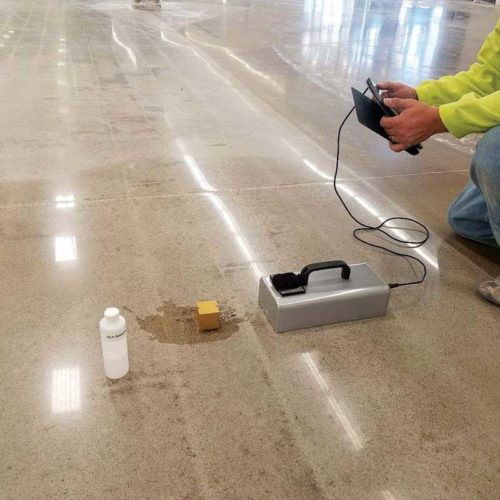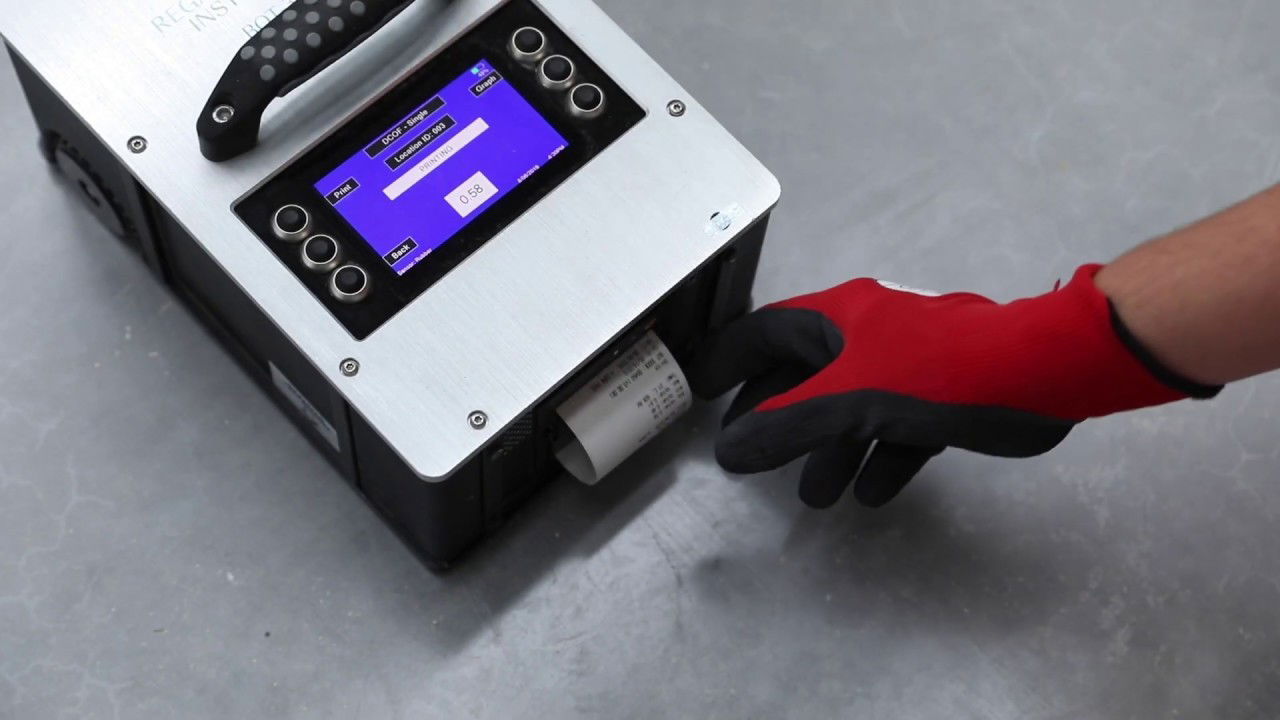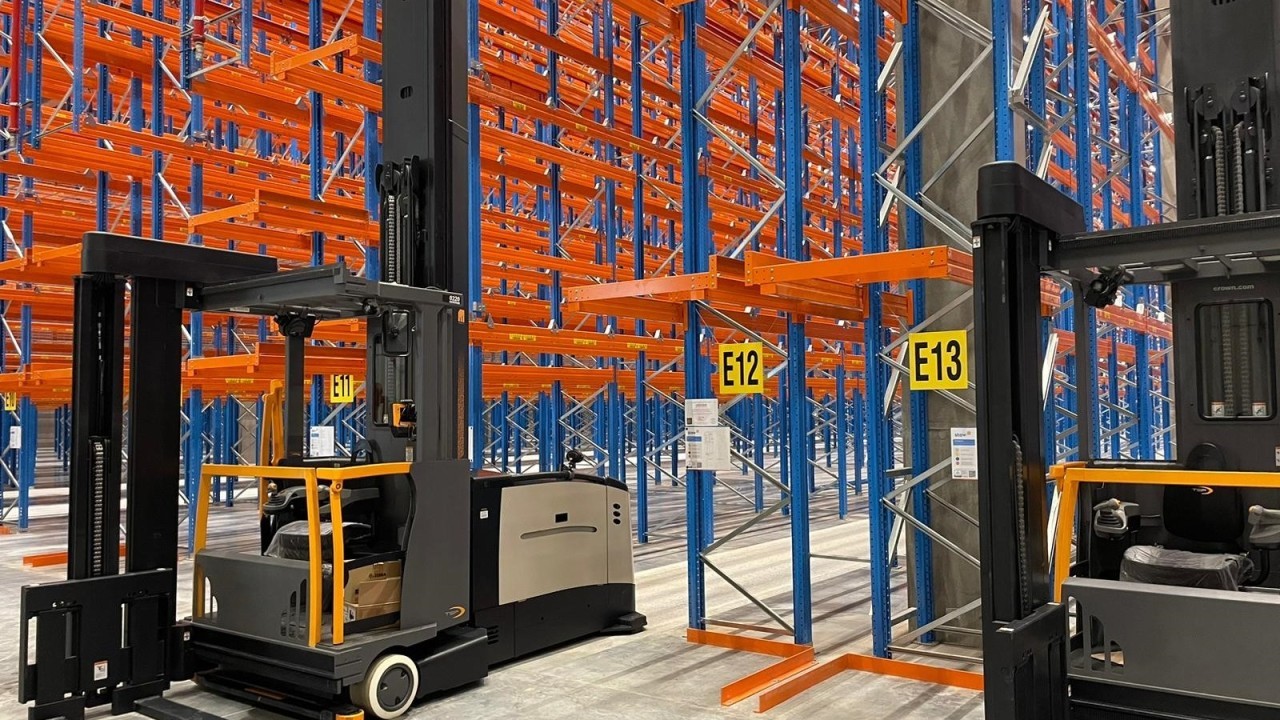Polished concrete floors can be very smooth and glossy, especially with a high level of polish. This smoothness can make them prone to being slippery, mainly when wet or when contaminants are present. Testing The Coefficient of Friction (COF) helps assess the slip resistance of the polished concrete surface, ensuring that it meets safety standards and reduces the risk of slip and fall accidents.
Specific regulations and standards regarding slip resistance for flooring materials exist in many industries and settings. For instance, the Americans with Disabilities Act (ADA) sets standards for slip resistance in public areas. Testing the COF helps ensure compliance with these regulations, avoiding potential legal issues and liabilities.
How do you measure slip resistance?
The Coefficient of Friction (COF) test is a method used to measure the frictional properties of a surface, including its slip resistance. It is essential in assessing the safety of floors, especially in environments where slips and falls are a concern, such as workplaces, public spaces, and residential areas.
Measuring slip resistance on polished concrete at a job site can be done relatively quickly using a portable slip resistance testing device or tribometer.
Before conducting any slip resistance testing, ensure the surface is clean and free of contaminants that could affect the results. Follow safety guidelines and use appropriate personal protective equipment as needed.
Activate the tribometer to start the test. The device will measure the frictional force as it moves across the polished concrete surface at a controlled speed. The results may be displayed as a Coefficient of Friction (COF) value or another slip resistance rating.
For more accurate results, it’s a good practice to conduct multiple tests at different locations on the polished concrete surface, especially in areas with varying levels of wear or traffic.

Ensuring safe walking surfaces with polished concrete
For many years, floor finish and polish contractors have used the ASTM D-2047 (UL-410) standard to determine the slip-resistant properties of their products. The test method divides products into two categories based on their dry Static Coefficient of Friction (SCOF) values. Products with a SCOF value equal to or greater than 0.5 fall under the first category, while products with a SCOF value below 0.5 fall under the second category.
It’s important to note that slip-resistant products are classified as those with a SCOF (Static Coefficient of Friction) of 0.5 or greater. However, it’s not entirely accurate to assume that products with a SCOF above 0.5 are utterly safe while those with a SCOF below 0.5 are entirely unsafe. This pass-fail approach needs to be more accurate.
Because about 80% of all slip and fall claims occur on wet floors, it only seemed reasonable to test walkways under wet conditions rather than dry.
Surfaces whose wet SCOF is 0.6 or greater are referred to as High-Traction. Walkways whose wet SCOF is below 0.6 but greater than a value of 0.4 are defined as Moderate Traction, and walkways that possess a wet SCOF of less than 0.4 are defined as Low Traction. High-traction surfaces present the least amount of risk for a slip-and-fall claim, while Low-Traction surfaces present the highest risk.

Summary
In summary, the Coefficient of Friction test is crucial for polished concrete floors to ensure they are safe for users, comply with regulations, and minimize the risk of accidents and associated liabilities. Regular testing and appropriate maintenance can help maintain the aesthetics and functionality of polished concrete surfaces while enhancing safety.
When measuring slip resistance on polished concrete, it’s essential to consider the specific conditions and requirements of the area in question and any applicable industry or safety standards. Additionally, it may be beneficial to consult with experts in slip resistance testing or engage a professional to perform the testing to ensure accurate and reliable results.





